How to pop break dance
Your Guide to Popping and Locking
© Sinisa Kanizaj / Red Bull Content Pool
How did popping and locking come to be? Find out more about the dance style and the moves to create more emotive dances.
Written by Red Bull Editorial Team
4 min readPublished on
Popping and locking have inspired hip hop, dubstep, and other modern dance moves for a long time. These two dance styles differ in their movements, though. While both dance styles tend to intertwine, popping and locking is a combined style of dance that has a very distinct rhythm. This unique move is the combination of two movements: the pop and the lock.
What Is Popping and Locking?
Popping has its roots in Fresno, California, and is the creation of Sam “Boogaloo Sam” of the group Electric Boogaloos. Locking is the creation of Don Campbell, a member of the Lockers, a Los Angeles group. These two moves combine to form a basis for hip hop, dubstep, and contemporary dancers to play into their choreography. Here's a guide to help you understand the moves and how you can up your popping and locking game so you can get better and create more emotive dances.
Practice Popping With Some Basic Moves
Dive into perfecting your popping by learning some of the basics. First of all, popping involves contracting and relaxing your muscles, creating a hit effect when you put it to the beat of the music you're dancing to. You can use popping in quick successions or in slow and controlled movements to add emphasis to certain beats in the music.
Popping Simcho performs at the Red Bull Dance Your Style Pre-World Final
© Little Shao/Red Bull Content Pool
The Forearm Hit
To get the hang of popping, start with a basic forearm hit or forearm pop. Just contract and relax the muscles of your forearm to the beat of the music, either in fast hits or slow hits to reflect the different points in the rhythm that you want to make stand out in your dance.
The Chest Pop
When you do a chest pop, you're pretty much doing the same thing as you do with a forearm hit, except the movement is in your chest muscles. Contract your chest inward quickly, almost where it feels like you're jerking your body in, but keep it controlled. Relax the tension in your chest muscles as quickly as you contract, and repeat the motion in the pattern you need for your choreography.
Play with this move by contracting and relaxing the muscles in your chest as you shift your body parts in different directions during your dance routine. Combine your forearm hits with your chest pops to create a flow to the music. You can use these two popping moves to form the basis of other moves you put into your dances.
Next Comes Locking
Locking is just stopping right in the middle of a quick movement and holding that position for a moment before flowing back into your dance. It's pretty easy to do. Just go through your routine and put these stops at different points in the music that you want to accent with your body. Freeze your dance in a position that drives your choreography to the rhythm, hold it for a couple of beats, and continue the routine. Here are some signature lock dance moves you can practice to hone your skills as a dubstep or hip hop dancer.
Freeze your dance in a position that drives your choreography to the rhythm, hold it for a couple of beats, and continue the routine. Here are some signature lock dance moves you can practice to hone your skills as a dubstep or hip hop dancer.
Greenteck poses for a portrait during the Red Bull Dancers Tour Japan
© Little Shao/Red Bull Content Pool
Ask for Five
This locking dance step looks like the hand signal for a high five. To pull off this lock, listen for the points in the music where you want to put your stop, and start playing it out in your choreography. Dance your routine and lock your hand in a high-five position for several beats.
This looks awesome when you follow through with a forearm hit to emphasize the beat of the music. You can use the ask for five move in a few different ways. In one, you can do it one-handed where you freeze your hand right in front of your body, or you can use both hands as you flow with forearm hits. It's really up to you how much or how little you put the move into your dance steps.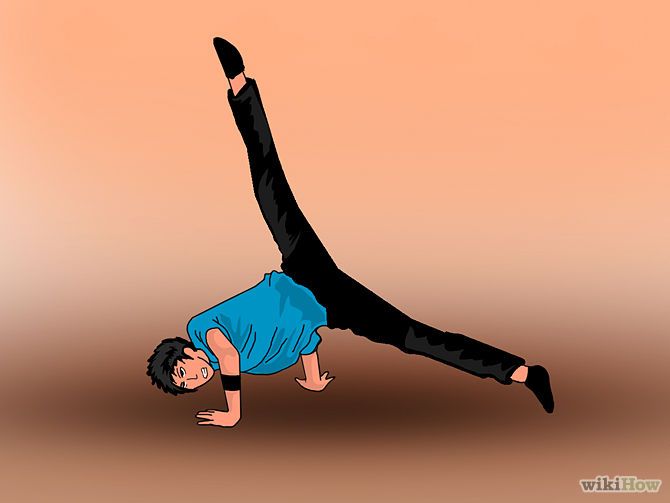
Locking Points
To pull off this lock, incorporate pointing in your choreography. Dance your routine and at certain beats through the music, freeze your hand while pointing at something or someone. This can accent your moves in a really cool-looking way on stage, especially if you're performing with live musicians, so you can lock point at the guitarist, drummer, or other person playing on stage with you.
Popping and locking are unique dance moves that have a long history of influencing popular and mainstream hip hop and other dance styles. Today, street dancers who favor contemporary styles like funk dances and dubstep can use the popping and locking moves to bring out the music, beat, and one-of-a-kind dance style. So give some of these moves a try, and if you're up for learning more, there are always dance lessons from the pros.
Popping Dance Moves - How To Pop And Lock Dance For Beginners
In this popping dance video mini-series you will learn the most essential moves and techniques you need to get started with.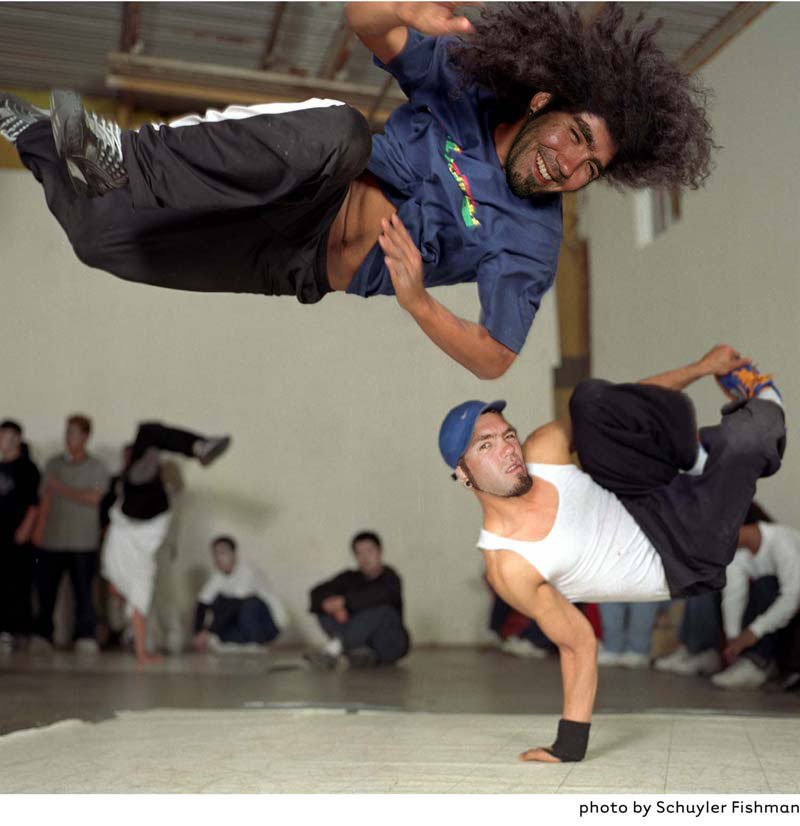 Pop and lock dance style is characterized by quickly contracting and relaxing various muscle groups to create a very sharp movement. Below you will learn forearms hits/popping, chest pop, and Dubstep dance basics. Please check out the full course if you want to learn more moves.
Pop and lock dance style is characterized by quickly contracting and relaxing various muscle groups to create a very sharp movement. Below you will learn forearms hits/popping, chest pop, and Dubstep dance basics. Please check out the full course if you want to learn more moves.
Video 1: Popping dance basics – Forearm hits
In this video you will learn how to create a “hit” or “pop” the forearm. While you can pop any part of the body the forearm is a great one to start with. El Tiro provides a great drill that helps you find your forearm popping muscles. Enjoy:
Want more? Get the full Course:
The Ultimate Popping Dance Course (Beginner to Advanced)
Learn how to dance popping and locking with step by step video lessons. You will learn hits/popping, waving, robotics, gliding, vibrating, slow motion effects and more. Become the freestyler you always wanted to be and impress your friends with your dance moves. Includes 3+ hours of video lessons. You can download it instantly or stream it online here.
Become the freestyler you always wanted to be and impress your friends with your dance moves. Includes 3+ hours of video lessons. You can download it instantly or stream it online here.
Learn more & Buy it here (Click here)
Video 2: Chest Pop
In this second pop and lock dance lesson you will learn how to do a chest pop. The chest pop is really cool because it can create such a big effect in your popping. You will learn the technique needed to do a chest pop and also get drills to practice it.
Video 3: Dubstep dance basics
Dubstep dance is actually popping dancing to dubstep music! In this lesson you will learn how to incorporate “dime stops” and “hits” when you dance to dubstep dance music. The instructor also gives you specific pattern to follow your moves, but at the end you can play with it to make it your own.
Want more? Get the full Course:
The Ultimate Popping Dance Course (Beginner to Advanced)
Learn how to dance popping and locking with step by step video lessons. You will learn hits/popping, waving, robotics, gliding, vibrating, slow motion effects and more. Become the freestyler you always wanted to be and impress your friends with your dance moves. Includes 3+ hours of video lessons. You can download it instantly or stream it online here.
Learn more & Buy it here (Click here)
Hip Hop dance moves for beginners
How to dance at a club for men and women
How to Breakdance for beginners
Styles and directions of upper breakdance
To begin with, let me explain what prompted me to choose this topic and why this article, in my opinion, deserves attention.
I, that is, the author, have been doing this top breakdance for four years, persistently and continuously. Like everyone else, I had moments when I encountered a lack of materials on the topic - it’s hard for b-boys to understand when on a cassette from two hours of a video you are interested in, three minutes are collected ... But nevertheless, I collected cassettes, like and that's it, I listened to my coaches, looked at other dancers. And, importantly, I searched on the Internet. The fact is that as a person who speaks English professionally, I had the opportunity to look through dozens of foreign pages, read in the original many articles about the history of the development of dance, its origins, varieties. Moreover, articles written by those who stood at these sources, and whose experience includes decades of work. These people include Damon Frost, Tornado, Storm, Sundance, Boogaloo Shrimp, Poppin' Pete, Pop'n'Taco, Mr. Wiggles, Space Capital, as well as our compatriots such as, say, Artur Ignatov and Igor Zakharov.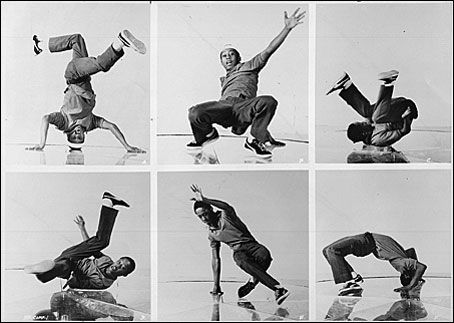 Now it's time to systematize the information received, adding our own experience. nine0003 And another small factor that prompted me to take up this work is the extreme scarcity, stinginess and fragmentation of information on top breaking on the Russian Internet. Not only is scarcity, it’s often just nonsense written by non-professionals, a vivid example of which is a small article about the top break, created by no one knows who, but now lying on every second web page of every third team, where the author claims that in the top There are four styles of breakdance - jam, mechanical, electric boogie and skeleton style. Some kind of mystic! I think the folks at The Electric Boogaloos would be very surprised to read something like this. So, in order to sort out all this chaos and give more or less reliable information, I took up the article. nine0005
Now it's time to systematize the information received, adding our own experience. nine0003 And another small factor that prompted me to take up this work is the extreme scarcity, stinginess and fragmentation of information on top breaking on the Russian Internet. Not only is scarcity, it’s often just nonsense written by non-professionals, a vivid example of which is a small article about the top break, created by no one knows who, but now lying on every second web page of every third team, where the author claims that in the top There are four styles of breakdance - jam, mechanical, electric boogie and skeleton style. Some kind of mystic! I think the folks at The Electric Boogaloos would be very surprised to read something like this. So, in order to sort out all this chaos and give more or less reliable information, I took up the article. nine0005
1. A BRIEF EXCURSION TO THE PAST.
I'm not going to long and tedious to list all those who contributed to the development of top breakdance. There are a lot of such people, you can’t remember their names, and this is not the goal. It's just worth briefly talking about the origins:
There are a lot of such people, you can’t remember their names, and this is not the goal. It's just worth briefly talking about the origins:
LOCKING - the origin of the dance is quite clear. Its creator is Don Campbellock.
His team The Lockers made locking popular in the 70s. There is a version that most of the original locking movements come from the dance “The Ugly Duck“, which is quite justified, since the original locking, as it is danced by Sugar Pop, Eddie Ellison, Pop'n'Taco, Shabba Doo - real breakdance veterans - than - something reminds the well-known dance of “little ducklings” in Russia. The same locking that we see now in our country, and in many foreign teams, is a highly modified form, which can generally be attributed to new school hip-hop. nine0005
ELECTRIC BOOGIE - it's really hard to get to the truth here. Each of the "old men" gives his version of the origin of the dance. The main ones in this part are considered in the world of The Electric Boogaloos. The composition of this team, which also appeared in the 70s, includes such personalities as, say, Poppin' Pete, Skeeter Rabbit and the founder of Boogaloo Sam. The team got its name, apparently, from James Brown's old hit "Do the Boogaloo". Subsequently, when this team appeared on TV screens, many people decided that what they were doing was called "Electric boogie". However, another confusion arises here, since the whole world is currently using another name - popping, and it means exactly what we in Russia consider electric boogie, but “our” Russian pop is just one of the styles of popping , characterized as a shoulder drop style (shoulder drop - according to the type used, that is, shoulder, fixation). nine0005
The composition of this team, which also appeared in the 70s, includes such personalities as, say, Poppin' Pete, Skeeter Rabbit and the founder of Boogaloo Sam. The team got its name, apparently, from James Brown's old hit "Do the Boogaloo". Subsequently, when this team appeared on TV screens, many people decided that what they were doing was called "Electric boogie". However, another confusion arises here, since the whole world is currently using another name - popping, and it means exactly what we in Russia consider electric boogie, but “our” Russian pop is just one of the styles of popping , characterized as a shoulder drop style (shoulder drop - according to the type used, that is, shoulder, fixation). nine0005
According to another version, the team founded by Boogaloo Sam was not the first, before them, back in the 60s, it was The Original Electric Boogaloos, who invented everything. This is what the black brothers say, this is what Scooby says in his interview. Scooby, by the way, generally states that popping is an invention of blacks. One can hardly agree with this, knowing that the moonwalk has been known in pantomime for more than 100 years, there is fixation, waves, and much more in pantomime. And the same moonwalk, by the way, was first demonstrated by Marcel Marceau (it was then called “walking against the wind”). Popping, according to foreigners, these are various movements accompanied by fixation. And although you can dance without fixing at all (take, for example, pure waving), but still absolutely all the dancers of the upper breakdance, “Verkhoviks” in Russian, are called “poppers” abroad, except for those who are engaged in locking. That is, you dance pop, pure robot or the same boogie - all the same, you are in English "popper". Thus, one can conclude about the inaccuracy and non-standard terminology, even Western, not to mention domestic. nine0005
Scooby, by the way, generally states that popping is an invention of blacks. One can hardly agree with this, knowing that the moonwalk has been known in pantomime for more than 100 years, there is fixation, waves, and much more in pantomime. And the same moonwalk, by the way, was first demonstrated by Marcel Marceau (it was then called “walking against the wind”). Popping, according to foreigners, these are various movements accompanied by fixation. And although you can dance without fixing at all (take, for example, pure waving), but still absolutely all the dancers of the upper breakdance, “Verkhoviks” in Russian, are called “poppers” abroad, except for those who are engaged in locking. That is, you dance pop, pure robot or the same boogie - all the same, you are in English "popper". Thus, one can conclude about the inaccuracy and non-standard terminology, even Western, not to mention domestic. nine0005
This is more about history. Now let's deal with terminology and classification.
2. STYLES AND DIRECTIONS.
* LOCKING Locking. A dance characterized in English as “fast jazzy moves“. The dancer performs a certain set of movements, and after each movement there is a stop (but not a pause!). That is, speaking in English, each move is locked, each movement is closed. Here is the explanation of the name "locking".
Locking is based on three types of movements: loops, points and jumps. nine0003 Loops are rotational movements performed by the hands. Loops can be made both with a brush and with a forearm, that is, from the elbow. The hand or forearm (from the elbow to the fingers) seems to draw circles in the air. This element is now borrowed by house dance, and in general, almost all types of modern dances.
Points, or dots. This movement is the throwing out of one or both hands. Points can be performed in principle in any planes, however, it is imperative to remember that the arm must go from the elbow. That is, at the beginning of the movement, the elbow is thrown out, and then the rest of the arm. Points are performed sharply and clearly, with fixation in the elbow joint. nine0003 Jumping. It is rather difficult to give an accurate description here. Let's just say that the main locking jump is performed from a standing position into a “rider pose”. However, no description will replace your viewing. Very good locking, in its original form, is presented in the film “Break it“. This is exactly the locking that has turned people on for decades. Good schemes and technique can also be seen from Scarecrows at Battle of the Year'2000. Well, in terms of synchronization, Da Boogie Crew worked great on BOTY'98. There is also just a great solo at Bboy Summit'2000.
Points are performed sharply and clearly, with fixation in the elbow joint. nine0003 Jumping. It is rather difficult to give an accurate description here. Let's just say that the main locking jump is performed from a standing position into a “rider pose”. However, no description will replace your viewing. Very good locking, in its original form, is presented in the film “Break it“. This is exactly the locking that has turned people on for decades. Good schemes and technique can also be seen from Scarecrows at Battle of the Year'2000. Well, in terms of synchronization, Da Boogie Crew worked great on BOTY'98. There is also just a great solo at Bboy Summit'2000.
And a few more words about locking require a sense of dance justice from me. Among many young dancers, especially b-boys, there is an opinion that locking is so, dancers. That this is not serious, that it is suitable only for group performances, that if necessary, you can always learn a couple of schemes, and you should not devote special time to locking.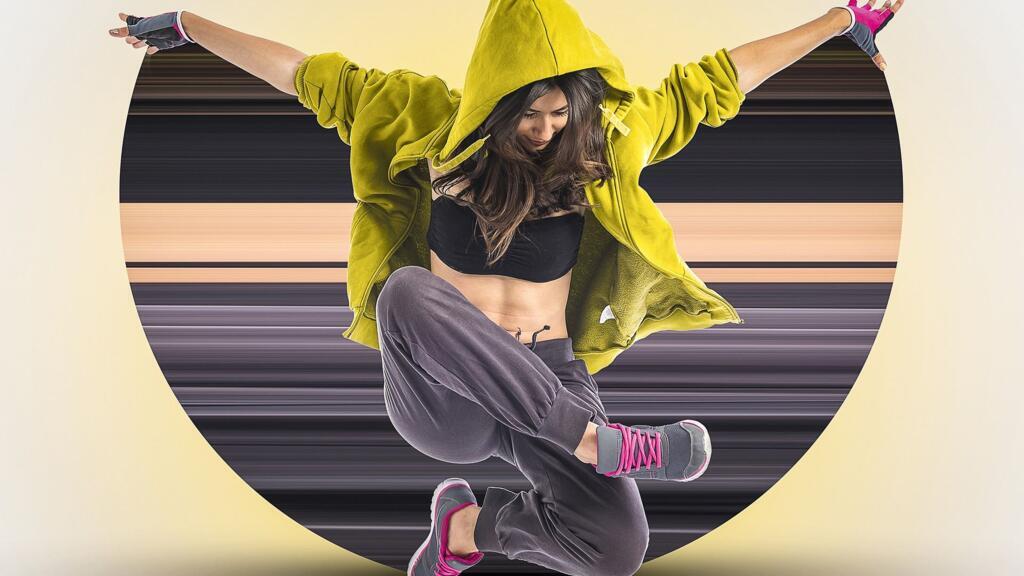 This is the grossest mistake. A professionally performed locking solo looks no worse than any other solo in any kind of dance. However, learning how to move correctly and beautifully is much more difficult here. I emphasize, much more difficult than in most other dances. This takes hours and years, so do not underestimate this element of dance culture. nine0003 * POP-LOCKING Pop-locking. Here the opinions of the dancers do not coincide. Many professionals, veterans, believe that there is no such direction. Like, popping is popping, and locking is locking. Others, and illiterate youth predominate among them, call ordinary locking pop locking. Let me disagree with either one or the other. I acknowledge the existence of such a direction as pop-locking, but I draw a line between it and locking. In general, my conclusions are based, firstly, on the name itself. That is, this dance combines elements of pop (precisely pop!) and locking (but a little modernized). A striking example is Justin Timberlake, N'Sync.
This is the grossest mistake. A professionally performed locking solo looks no worse than any other solo in any kind of dance. However, learning how to move correctly and beautifully is much more difficult here. I emphasize, much more difficult than in most other dances. This takes hours and years, so do not underestimate this element of dance culture. nine0003 * POP-LOCKING Pop-locking. Here the opinions of the dancers do not coincide. Many professionals, veterans, believe that there is no such direction. Like, popping is popping, and locking is locking. Others, and illiterate youth predominate among them, call ordinary locking pop locking. Let me disagree with either one or the other. I acknowledge the existence of such a direction as pop-locking, but I draw a line between it and locking. In general, my conclusions are based, firstly, on the name itself. That is, this dance combines elements of pop (precisely pop!) and locking (but a little modernized). A striking example is Justin Timberlake, N'Sync.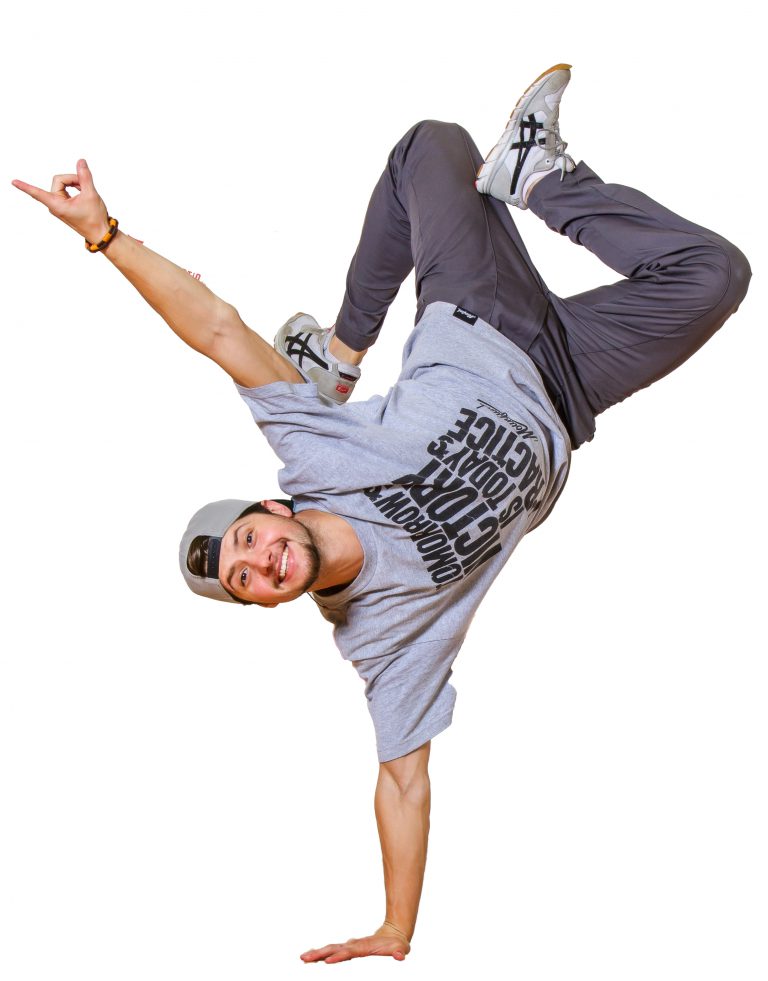 In his solo video, he perfectly dances exactly what I consider pop locking, and the French, for example, call R'n'B dance. Yes, and the hit N'Sync called "Pop" confirms my opinion. Look at the choreography in it. By the way, we must recognize the huge role of Michael Jackson here. After all, Jackson made a huge contribution to the popularization of breakdance (at least when he danced a robot to the Jacksons' Five hit “The Dancing Machine“). And it was he, with his unique dance style, who made pop-locking the property of the masses. Of course, he borrowed some of the movements from the grandfather of funk music, James Brown. However, Michael Jackson in his videos combined elements of locking and pop in the dance part, which is very noticeable if you look closely. nine0003 Pop-locking is well represented in many "boy" groups, both in the West and in Russia. But it's really more of a group dance, so if you're not Michael Jackson, it won't be easy for you to solo.
In his solo video, he perfectly dances exactly what I consider pop locking, and the French, for example, call R'n'B dance. Yes, and the hit N'Sync called "Pop" confirms my opinion. Look at the choreography in it. By the way, we must recognize the huge role of Michael Jackson here. After all, Jackson made a huge contribution to the popularization of breakdance (at least when he danced a robot to the Jacksons' Five hit “The Dancing Machine“). And it was he, with his unique dance style, who made pop-locking the property of the masses. Of course, he borrowed some of the movements from the grandfather of funk music, James Brown. However, Michael Jackson in his videos combined elements of locking and pop in the dance part, which is very noticeable if you look closely. nine0003 Pop-locking is well represented in many "boy" groups, both in the West and in Russia. But it's really more of a group dance, so if you're not Michael Jackson, it won't be easy for you to solo.
* ELECTRIC BOOGALOO (ELECTRIC BOOGIE) Electric boogie. Basically, electric boogie is considered the broadest concept, including all of its sub-styles. This is in our country. Let's talk about electric boogie trends. The main ones here I would call a robot (robot man), king tat (king tut), pops (shoulder drop popping), and, in fact, an electric boogie, as a combination of all this. nine0005
Basically, electric boogie is considered the broadest concept, including all of its sub-styles. This is in our country. Let's talk about electric boogie trends. The main ones here I would call a robot (robot man), king tat (king tut), pops (shoulder drop popping), and, in fact, an electric boogie, as a combination of all this. nine0005
1) Robot man (robot). If you briefly describe what the dance looks like, then we can say that the dancer works to create the illusion that he is not a person, but a mechanical device. The robot moves according to certain principles, it works according to the program, it has its own goals and objectives. All parts are completely isolated from each other, able to move separately or together. For example, you can raise your hand without touching the rest of the body, which must remain completely (!) Motionless. This is isolation. And you can turn your head at the same time, always at the same speed as the hand moves, and be sure to start and finish both movements at the same time. This is also isolation. One more important component that forms the illusion is needed - this is fixation. Fixation is a sharp or not very stop or start of movement. Fixation can be performed with or without a push. It is articular and muscular. With muscle fixation, all the muscles of your body at the beginning / end of the movement seem to tremble, that is, they tense up very sharply. In the process of the movement itself, they are relaxed. With articular fixation, the stop occurs due to the work of the joints. These are the most important components, without which it is impossible to dance the robot. However, there are many other rules, features that complement the image you create. This includes such, for example, principles as jacking, hydraulics, manipulativeness, and so on. Artur Ignatov, artistic director and soloist of the Kvassa Theatre, explains well the features of the robot in his interview to the magazine “DJ Culture”. In this style, he says, there are many sub-styles - cyberrobot, biorobot, robot-jack, guru-robot, and others.
This is also isolation. One more important component that forms the illusion is needed - this is fixation. Fixation is a sharp or not very stop or start of movement. Fixation can be performed with or without a push. It is articular and muscular. With muscle fixation, all the muscles of your body at the beginning / end of the movement seem to tremble, that is, they tense up very sharply. In the process of the movement itself, they are relaxed. With articular fixation, the stop occurs due to the work of the joints. These are the most important components, without which it is impossible to dance the robot. However, there are many other rules, features that complement the image you create. This includes such, for example, principles as jacking, hydraulics, manipulativeness, and so on. Artur Ignatov, artistic director and soloist of the Kvassa Theatre, explains well the features of the robot in his interview to the magazine “DJ Culture”. In this style, he says, there are many sub-styles - cyberrobot, biorobot, robot-jack, guru-robot, and others.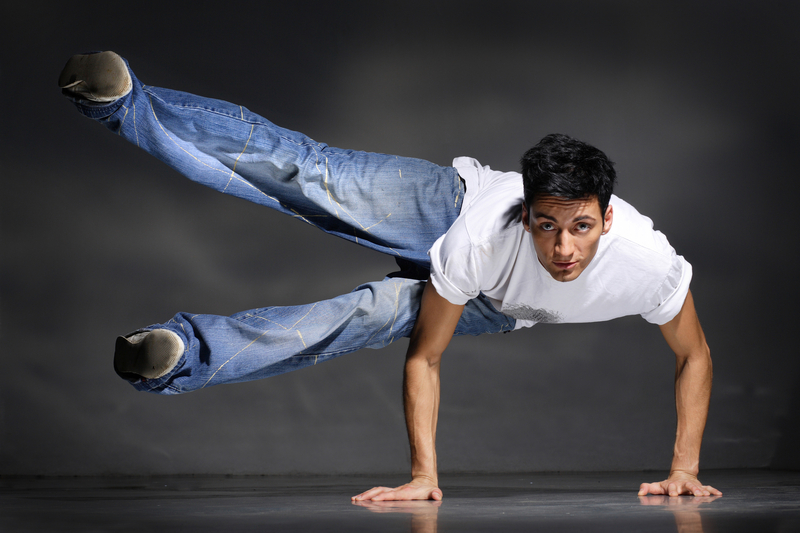 I would add that any person can create his own style in the robot - you just need to come up with your own principle of movement, create a certain set of your chips. And, of course, different types of robots are characterized by different performance of the basic components. For example, the same fixation in a mannequin is very different from the fixation of an iron robot. nine0003 The robot moves with the help of glides (a special technique of sliding), as well as elementary heel-toe walking (toe-heel walk). This is not counting, of course, the gait of the robot. You can just go slowly and fixing, you can go sharply and with several points in each movement (strobe effect), you can seem to stick / magnetize to the ground, and so on. In general, the limit here is only your imagination.
I would add that any person can create his own style in the robot - you just need to come up with your own principle of movement, create a certain set of your chips. And, of course, different types of robots are characterized by different performance of the basic components. For example, the same fixation in a mannequin is very different from the fixation of an iron robot. nine0003 The robot moves with the help of glides (a special technique of sliding), as well as elementary heel-toe walking (toe-heel walk). This is not counting, of course, the gait of the robot. You can just go slowly and fixing, you can go sharply and with several points in each movement (strobe effect), you can seem to stick / magnetize to the ground, and so on. In general, the limit here is only your imagination.
2) King tut (king tat - royal wrist). What kind of name options does not go around our great country! From “Kentat” to “Kentucky”! It's just that the hair stands on end (maybe it's just me, then sorry, just languages are my profession).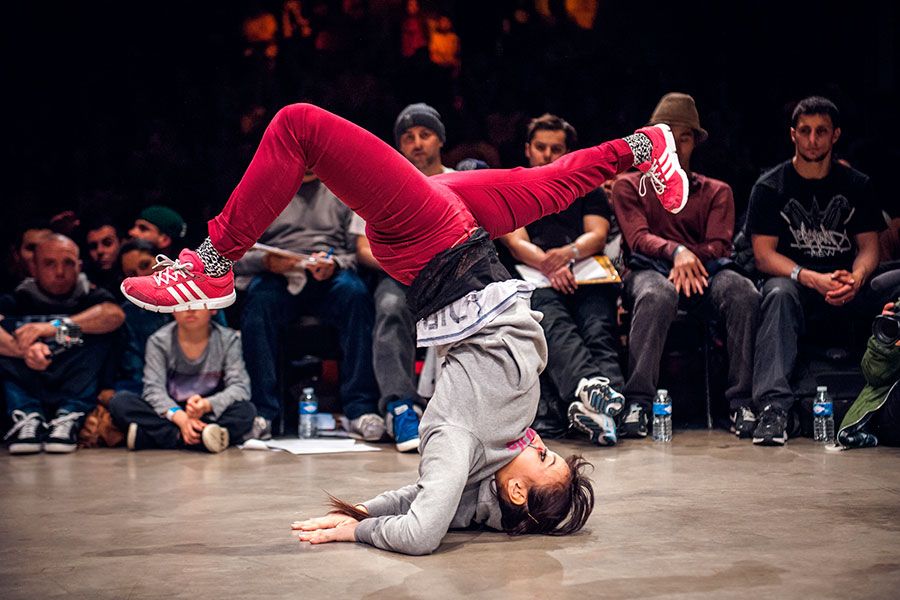 nine0003 Artur Ignatov describes very well king tat all the same. Let me quote him here with a few comments. A. I.: “... the style of top breakdance - king tat, reminiscent of the dance of the pharaohs, can be like wu-shu. The dance is distinguished by the presence of right angles. King tat, in essence, is the dance of angles and their combinations. Each new combination of angles is fixed for each share, or the drawing of the left hand is delayed by one or three shares with an alternate change in direction and height. The hands are straight, the elbows are at shoulder level, the shoulders are lowered, the body is straight, the look of the pharaoh. Starting position - the hands are folded in front of the chest and pushed back to the distance of the elbow from the chest. Wu-shu snake style is smoothly woven into this dance, waves and lying positions are also included. Ideally, king tat is the magic of Ra, the transformation of an interactive mystery, when in pairs, threes, fours, these mega eared cyberpharaohs fly through the spheres around each other, creating dancing frescoes.
nine0003 Artur Ignatov describes very well king tat all the same. Let me quote him here with a few comments. A. I.: “... the style of top breakdance - king tat, reminiscent of the dance of the pharaohs, can be like wu-shu. The dance is distinguished by the presence of right angles. King tat, in essence, is the dance of angles and their combinations. Each new combination of angles is fixed for each share, or the drawing of the left hand is delayed by one or three shares with an alternate change in direction and height. The hands are straight, the elbows are at shoulder level, the shoulders are lowered, the body is straight, the look of the pharaoh. Starting position - the hands are folded in front of the chest and pushed back to the distance of the elbow from the chest. Wu-shu snake style is smoothly woven into this dance, waves and lying positions are also included. Ideally, king tat is the magic of Ra, the transformation of an interactive mystery, when in pairs, threes, fours, these mega eared cyberpharaohs fly through the spheres around each other, creating dancing frescoes.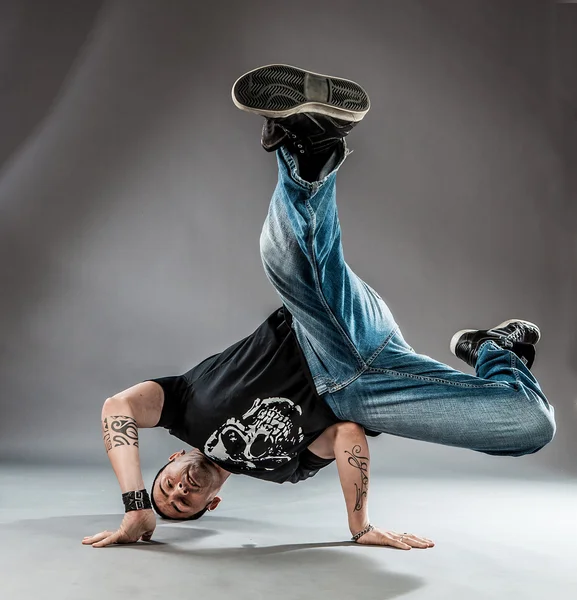 “
“
That's beautifully said. And, in general, quite accurate. King tat is really a dance of angles and their combinations, and the angles are formed by the shoulders, forearms and wrists. Fingers together, palms straight. As for lying positions and dancing frescoes, this is perhaps necessary only in some productions that only such super-professionals as the teacher of the Russian Academy of Theater Arts Artur Ignatov can do (maybe I'm wrong, but in my opinion Ignatov is one of those who in the famous Courier). However, the dance is described quite accurately. There is a good solo king tat at the very end of the Bboy Summit'2000 video. The main thing in this dance is to feel like a pharaoh and do not forget to follow the clear angles! nine0005
3) Pops - shoulder drop popping. Let's once again focus on why by the Russian term I mean such a long English name. The fact is that, of course, one can single out such a style in breaking as popping. It will be a dance, the basis of which is fixation, and the essence is that the body takes various postures in which it is fixed. Moreover, there is by no means necessarily the presence of any one line of dance, as, say, in waving. However, the main emphasis in the Russian version, that is, pop music, is placed precisely on the shoulder fixation. In other words, at the moment of fixation, the shoulders are reset all the way down, to the joint. Due to this, the body twitches in a characteristic way, creating the desired effect. Hence the name, or rather the characteristic - shoulder drop style (shoulder drop style). Pops is a very hard, clear and beautiful style. Unfortunately, very few people in our country know how to dance it well. Among foreign dancers, I would single out, firstly, the Flying Steps team. Their show at Battle of the Year'2000 includes a great piece of synchro pop - an almost perfect technical dance. Secondly, you can not pass by the German team Rocking till' Death. In their composition there is just a phenomenal dancer.
It will be a dance, the basis of which is fixation, and the essence is that the body takes various postures in which it is fixed. Moreover, there is by no means necessarily the presence of any one line of dance, as, say, in waving. However, the main emphasis in the Russian version, that is, pop music, is placed precisely on the shoulder fixation. In other words, at the moment of fixation, the shoulders are reset all the way down, to the joint. Due to this, the body twitches in a characteristic way, creating the desired effect. Hence the name, or rather the characteristic - shoulder drop style (shoulder drop style). Pops is a very hard, clear and beautiful style. Unfortunately, very few people in our country know how to dance it well. Among foreign dancers, I would single out, firstly, the Flying Steps team. Their show at Battle of the Year'2000 includes a great piece of synchro pop - an almost perfect technical dance. Secondly, you can not pass by the German team Rocking till' Death. In their composition there is just a phenomenal dancer.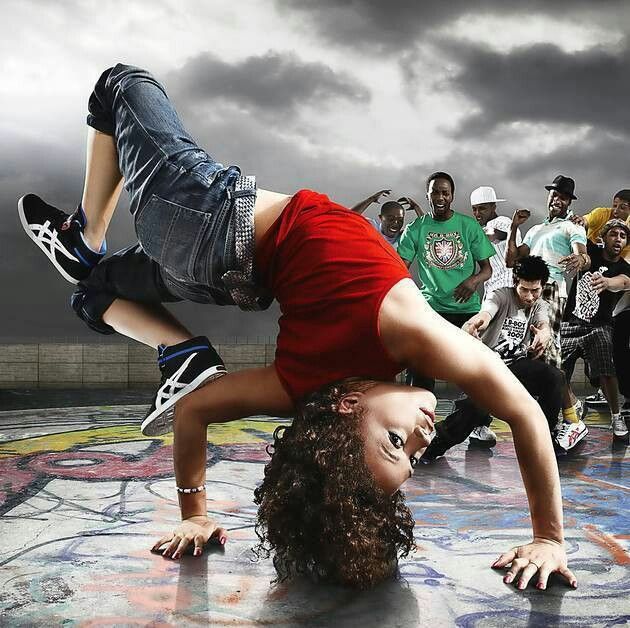 Watch his performances at the world championship at 1998 and 2000 and you will understand me - this person was given fixation by nature.
Watch his performances at the world championship at 1998 and 2000 and you will understand me - this person was given fixation by nature.
4) Electric boogaloo - electric boogie. In addition to the fact that electric boogie in our language is a concept that includes all of the above, it is also the name of a unique style. In general, initially, many drew a parallel between boogaloo and electric boogaloo. The younger brother of the founder of The Electric Boogaloos, Boogaloo Sam'a says that boogaloo is a dance in which the body assumes various unnatural poses and positions. By electric boogaloo, he means combining boogaloo with ticking, waving, popping and all other components. However, waves remain the basis of electric boogie. The waves go through the dancer's body to the music, they can be completely different - smooth, fixed (from several to many points, when the strobe effect is created), shaking, amplitude, and so on. The dancer moves along the floor with the help of glide, moonwalk, heel-toe walking. Electric boogie is freely combined with all the styles described above, creating a unique, breathtaking dance, unlike anything else. Everyone can find their own unique performance style. For some, plasticity will be important, others will pay special attention to fixation - the main thing is to try to do something of your own, and not copy the movements seen in the clip. This is all, of course, subject to good basic training and technical skills. nine0005
Electric boogie is freely combined with all the styles described above, creating a unique, breathtaking dance, unlike anything else. Everyone can find their own unique performance style. For some, plasticity will be important, others will pay special attention to fixation - the main thing is to try to do something of your own, and not copy the movements seen in the clip. This is all, of course, subject to good basic training and technical skills. nine0005
In general, I would like to say a little more about the philosophy of electric boogie. All this unique mixture of styles is united by one sign - the performance of each of them gives the effect of illusory, unreality of what is happening. This is one of the main goals of the dancer - to make the audience believe that in front of them is not an ordinary person, but something impossible, be it a robot, a rubber man or someone else. This is largely due to the history of funk and soul music (it was under the funk that the electric boogie was originally danced).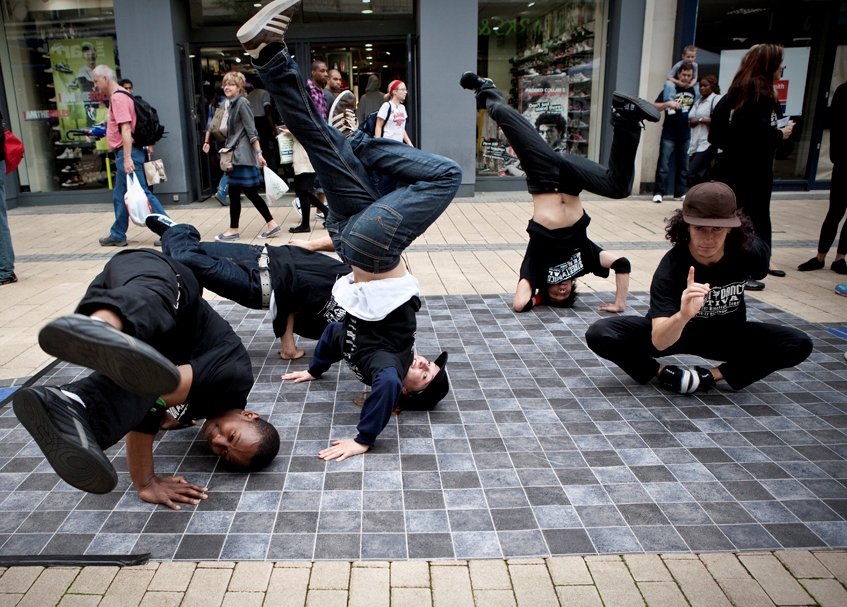 And that is why locking, say, cannot be attributed to electric boogie - it does not give the effect of illusion. In a word, this style cannot be mastered along with something else without paying enough attention to it. As well as in any other business, if you want to become a professional, give yourself entirely. But it's worth it, trust me! nine0005
And that is why locking, say, cannot be attributed to electric boogie - it does not give the effect of illusion. In a word, this style cannot be mastered along with something else without paying enough attention to it. As well as in any other business, if you want to become a professional, give yourself entirely. But it's worth it, trust me! nine0005
And in the end, it is necessary to note the materials used by me when working on this article.
First of all, this is an interview of Artur Ignatov to the magazine “DJ Culture“.
Secondly, a lot of different articles and interviews, taken by me in the English part of the Internet. I mention this in order not to inadvertently affect other people's copyrights, in particular, this Wild Baby Crew sign. The fact is that on the site of the Wild Baby Crew team there are, in general, quite good translations of some of these articles. However, I repeat - I do not use translations, but originals. nine0003 Thirdly, such videos as BOTY'98/2000, Freestyle Session 3, Bboy Summit'2000, UK Championship 96/98, Break it (training film), “Breakdance 2: Electric boogaloo“ (wonderful and very famous movie).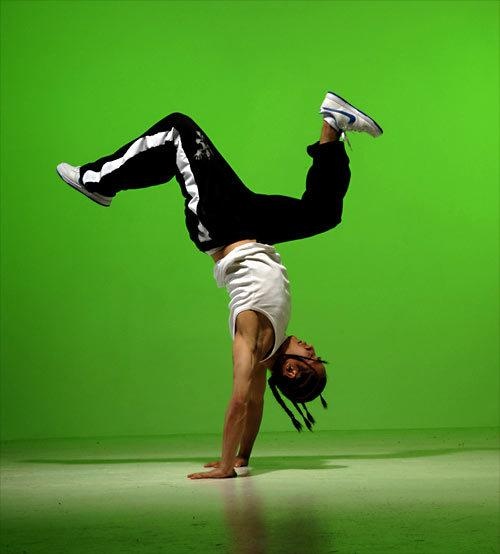
I would be very grateful to everyone who writes reviews about this article. In my opinion, there is nothing more detailed in Runet at the moment. Therefore, I am waiting for your comments at the address:
[email protected]
or
[email protected]
Any use of this article (its reprinting, publication, etc.) without the knowledge of the author is prohibited. The author can be contacted by email [email protected], or by phone (3512)74-37-04
(C) Vladimir Sheremetiev, 2002
The shocking identity of the newscaster who went viral for breaking dancing to k-pop music midway through the release of
The MBC News Announcer caught the attention of K-pop fans after he danced the choreography of several K-pop hits in the middle of the news broadcast. As a result, people launched a real search to find out his identity and what they found was quite shocking. nine0005
In particular, the announcer, whose name is Chon Yong Ha , danced at BlackPink , BTS , TXT , SNSD , SAYA , Hyueni and others, while getting into each key point choreography.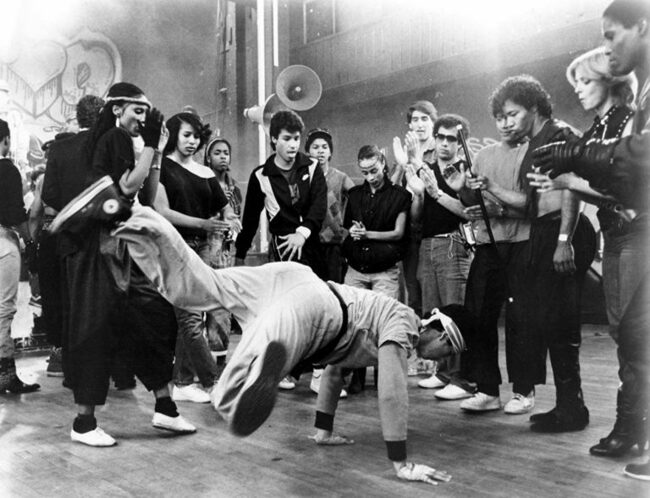 His witty way of presenting the news and his ability to dance quickly made headlines.
His witty way of presenting the news and his ability to dance quickly made headlines.
It turned out that Jung Yong Ha is also a vlogger. He has his own Youtube channel dedicated to lifestyle and travel, which has over 13,000 subscribers. In addition, the announcer knows how to DJ quite well and takes very beautiful photos. nine0005
The young man often posts picturesque photos from his travels on his social media page. Unlike his funny dance covers, he leads a rather quiet and laid back life.
With all this background information, netizens suspect that he may have been born with a silver spoon. According to them, Jung Yong Ha often stops at very expensive places in Korea and around the world. He also graduated from Chun'an University, one of the seven most prestigious universities in the country. nine0005
The witty way of presenting the news, in which Jung Yong Ha breakdances to relevant K-pop songs, is a new and attractive way to attract young viewers.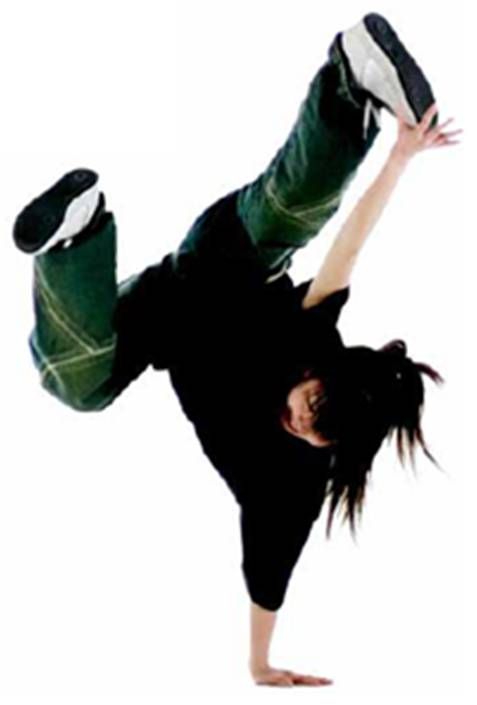 Thanks to his efforts, the newscasts have become more enjoyable for K-pop music fans to follow and study this interesting speaker with curiosity.
Thanks to his efforts, the newscasts have become more enjoyable for K-pop music fans to follow and study this interesting speaker with curiosity.